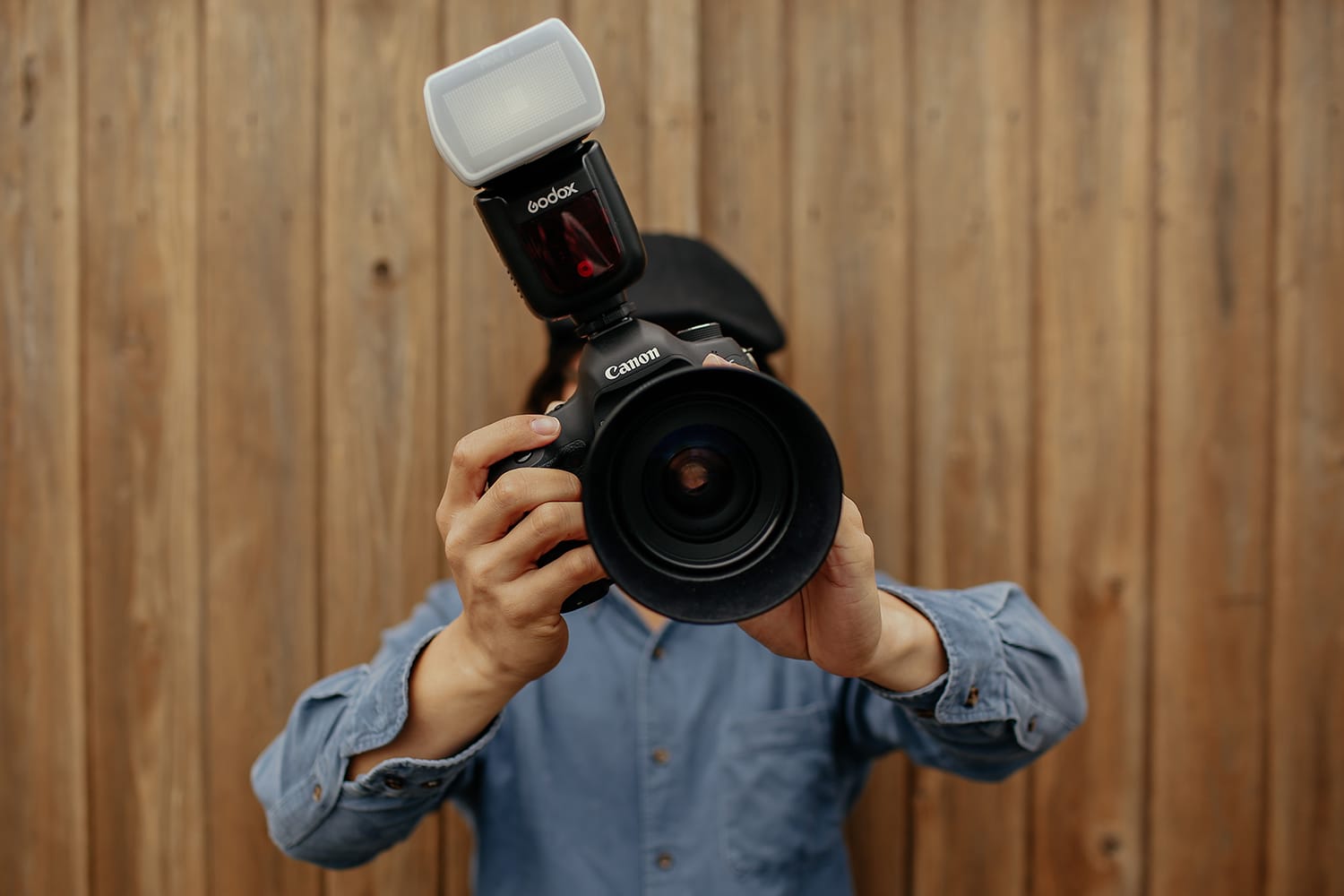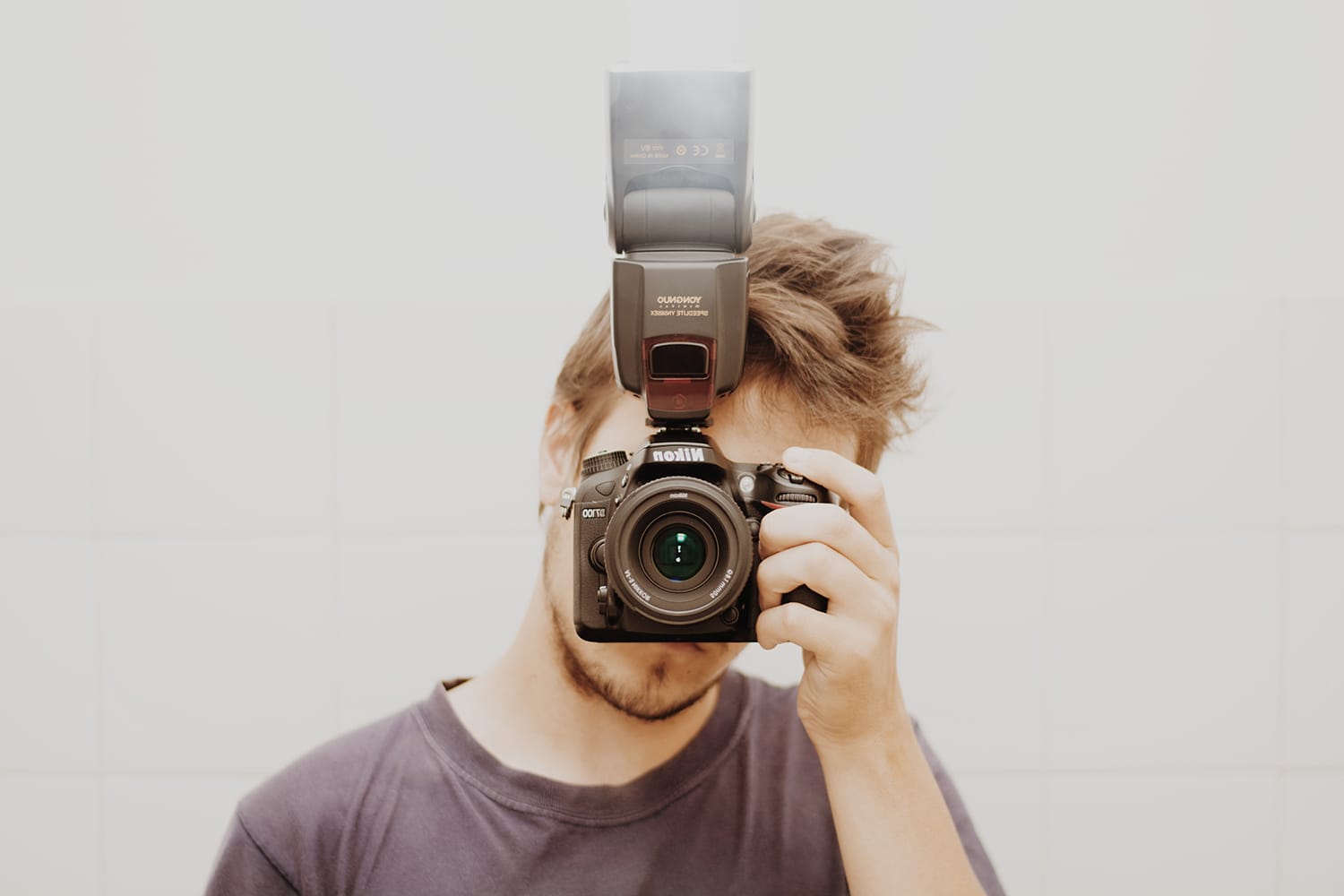A Quick Introduction Guide to Flash Photography
With digital cameras becoming so advanced in picking up on natural light, we almost rarely “need” to use flash to create more light. Of course in some situations it is absolutely necessary.
But just because we don’t necessarily need additional lighting doesn’t mean we shouldn’t use it in some situations. Here are a few ways to incorporate artificial light into your shots, whether shooting indoors or outdoors.

Fill Flash
Sometimes very little additional light is needed, such as when you are looking for “fill flash.”
Fill flash just means you are using extra lighting to brighten up shadows or details that might not get picked up using only natural lighting.
For example, if shooting on-location with the sun directly behind your subject, you can capture images with beautiful backlighting. However, as a result, you may lose some of the detail and highlights on the front of your subject.
Adding a little fill flash can help you avoid that while still getting great backlighting.
Move The Light
By using off-camera flash, you can capture some really creative shots indoors or outdoors. Being able to move the flash around to areas, other than on top of your camera, allows you to give the lighting direction. Maybe you want to highlight the left or right side of your subject, or maybe you want to create additional backlighting? Off camera flash is great for this.
Another great thing about off-camera flash is you can use multiple flashes at the same time. So you can get backlighting and side lighting simultaneously.

Freeze Action
When your flash fires off, odds are it is moving much faster than your shutter speed can. This allows you to freeze any motion.
Bouncing Light
Whether using an on-camera flash with an adjustable head or off-camera flash, bouncing light is a great way to create a soft fill-light in a room without putting the flash directly on your subject.
You are basically taking the flash and pointing it towards a surface that you can “bounce” the light off of, such as a white ceiling or wall. You can even bounce light off of a reflector.
Bouncing your flash is a way to spread the light in a room in a more subtle diffused way. Rather than only lighting up a specific area or subject, you are creating extra light in the entire room. This works great for events, such as receptions, when you want to draw attention to a lot of people or details in your image.

In Summary
Adding flash photography to your arsenal of skills can really open up a whole new world for you. Being able to manipulate, move, spread, and simply add additional light gives you the ability to get more creative with your images.
Flash photography isn’t just for indoor studios with no natural light. It can be used indoors in a well-lit or dark room, outdoors on a sunny or cloudy day, at night, or at venues and events where you need to be able to manipulate the light you are given.
Even just one speed-light can give you a lot of versatility in creatively shooting. Learning to work with speed-lights and the different settings can be overwhelming to some beginners. Watch videos, read, join social media groups and forums, and get advice from the pros.
There are many brands of flashes and many different types that have different features and capabilities. So do your research and read reviews and ask around before making a purchase.
Perhaps natural light photography is just “your thing” and your preference? That is perfectly fine. But at least invest some time to learn how to use flash and have at least one speed-light on hand for those times you just absolutely need a little extra fill light or have the desire to get super creative.
There’s a saying in photography circles that “good photographers wait for the light, and great photographers bend it to their will“. All this to say that knowing how to use your flash can open up so many doors – it’s a great tool to have in your arsenal.
Additional resources: Advanced Off-Camera Flash Photography.
